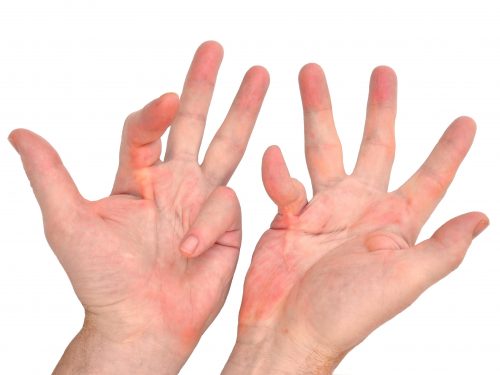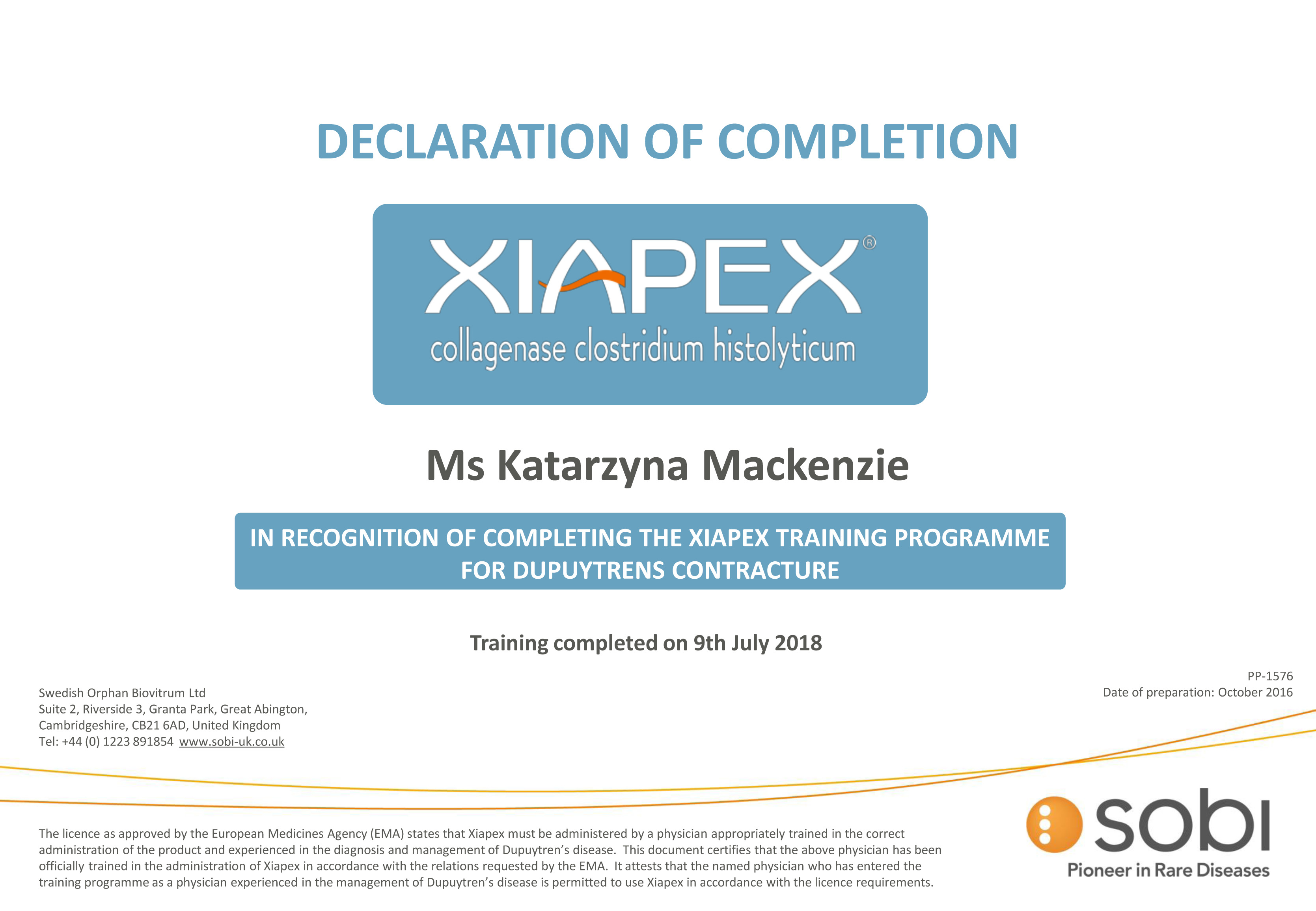Dupuytren’s Contracture Surgery
Dupuytren’s disease, also known as Dupuytren’s contracture is an abnormal thickening of the tissue called fascia just beneath the skin. This thickening occurs in the palm and can extend into the fingers pulling on the fingers and causing them to bend toward the palm, resulting in what is known as a Dupuytren’s contracture.
It is not clear why Dupuytren’s disease occurs. Several factors may increase the risk of developing the condition such as family history and Celtic or Northern European ancestry.
Dupuytren’s disease may get worse over time and can interfere with hand function ( contractures of the fingers ) , making it difficult to perform daily activities. When this occurs, there are nonsurgical ( collagenase injections, needle aponeurotomy ) and surgical treatment options available to help slow the progression of the disease and improve motion in the affected fingers.

DUPUYTREN’S DISEASE SURGERY – FACTS
| Length of surgery | 1-3 hours |
| Anaesthesia | General or regional anaesthetic |
| Hospital stay | Day case |
| Risks/complications of surgery | Frequent: Swelling, stiffness, discomfort on movement Infrequent: Infection, bleeding (haematoma), delayed wound healing, painful scar, damage to the nerve/vessels, recurrence, complex regional pain syndrome |
| Recovery | 1-2 weeks until return to office work |
| Driving | 2-3 weeks |
| Hand position | Elevation above the heart level |
| Follow up | 1 week, 6 weeks, 3 months, 6 months |
| Duration of results | Cannot stop the progression of disease |
DOWNLOAD FURTHER INFORMATION
Dupuytren’s Disease
Any hand surgery procedure is a personal choice and understandably there are a number of questions that arise. This information sheet is a general guide for patients considering Dupuytren’s disease treatment under the care of Dr Mackenzie. It should provide the answers to some questions that you may have.

What is Dupuytren’s disease?
Dupuytren’s disease is a condition that affects the connective tissue of the fascia—the fibrous layer of tissue that lies underneath the skin in the palm and fingers. In patients with Dupuytren’s, the fascia thickens, then tightens over time. This causes the fingers to be pulled inward, towards the palm, resulting in what is known as a Dupuytren’s contracture.
Firm nodules appear in the ligaments just beneath the skin of the palm of the hand, and in some cases, they extend to form cords that can prevent the finger straightening completely. The nodules and cords may be associated with small pits in the skin. Nodules over the back of the finger knuckles (Garrod’s knuckle pads) and lumps on the soles of the feet (plantar fibromatosis) are seen in some people with Dupuytren’s disease.
The disease usually progresses slowly, although the rate can vary. In rare situations, rapid progression can occur over a period of weeks or months. The ring and small fingers are most commonly involved. In many cases, both hands are affected, but each hand can be affected differently.
What are the signs and symptoms of Dupuytren’ disease?
Symptoms and signs of Dupuytren’s disease may include:
Nodules
- One or more small nodules may develop in the palm of the hand
- These nodules are fixed to the overlying skin
- They may feel tender but, over time, this tenderness usually goes away
- There can be “pitting” or deep indentation of the skin near the nodules
Cords
- The nodules may thicken and contract, contributing to the formation of dense and thick cords of tissue under the skin
- These cords can restrict the fingers and thumb from straightening or from spreading apart
Contractures
- As the tissue under the skin tightens, one or more of fingers may be pulled toward the palm and may be restricted from spreading apart
- The ring and little fingers are most commonly affected, but any or all of the fingers can be involved, including the thumb
- Most commonly, the first joint (knuckle joint) of the finger is affected, but the other joints may also be involved
- As the bend in the finger increases, it may be hard to straighten it fully. It may be difficult to grasp large objects, put the hand in a pocket, or perform other simple activities
- Some patients with Dupuytren’s disease may develop thickened tissue on the feet (Ledderhose disease), finger knuckles (Garrod’s knuckle pads) or penis (Peyronie’s disease)